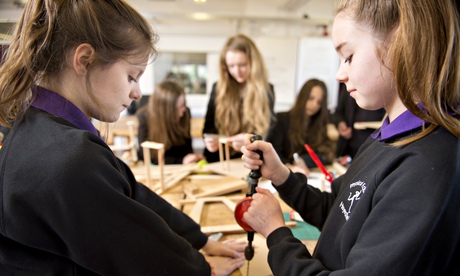
The findings of the Warwick commission report, published this week, that arts and culture are being “systematically removed” from the UK education system, should not be interpreted by the creative community as simply reinforcing the views they already held. Rather, the report points out two huge problems with how governments and society perceive the arts.
Firstly, the government needs to have a much more joined-up response to the potential of art and design for growing the economy. And secondly, the arts community needs to take more seriously calls to be reflective of the people that they serve who pay for culture via their taxes.
The government has a fractured approach to the arts. Five departments contribute funds – the departments of Communities and Local Government; Education; Business, Innovation and Skills; the Treasury; and, of course, Culture, Media and Sport (DCMS) – yet there seems to be no overarching plan for the arts. Michael Gove spent four years telling the world that British culture was not worth studying, while Ed Vaizey at DCMS has done his best if not to protect arts budgets, then at least to talk up the UK’s creative industries.
Yet the report has two statistics within it that are particularly startling. Between 2003 and 2013 there was a 50% drop in children choosing design and technology at GCSE, while last year the arts contributed £71.4bn to the economy. If we don’t urge kids to get drawing, designing, dancing and doing drama, we’re not only denying them access to a huge economy, but also failing to build capacity for growth in the creative industries. But all parties in the UK lack the imagination to grasp what this report is screaming out – that in the 21st century, because of new technology, the war between the arts and sciences is dead.
I recently attended a presentation in parliament by a group called the Digital School House. It was explained that because computer coding is like understanding coordinates that map space, being able to draw, visualise space, and do maths, are all essential skills.
By still thinking in terms of the 20th-century paradigm described by CP Snow as “two cultures” (science and the humanities), we misunderstand the times we are living in. The 20th century saw the development of a visual culture, modernism, within which technological innovation could thrive. In the 21st century we are living through as huge a revolution. Therefore we need to reimagine the role art plays in society and begin to capitalise on the possibilities. If we designed a Bauhaus-style initiative now, we would put computing at its heart. That’s what we must do if we are to compete against China, which is building schools of art and design while we are closing them down.
Above all what the Warwick commission tells us is that we need everyone on board. Institutions need to be bolder and more radical in their aspirations. This is important, not just for liberal ideas of fairness, but also for good business and soliciting innovations from everyone. This report makes it clear that we should be investing in cultural inventiveness. We used to be Great Britain; now – disastrously in branding terms – we are austerity Britain. But we need to become “Creative Britain”.

